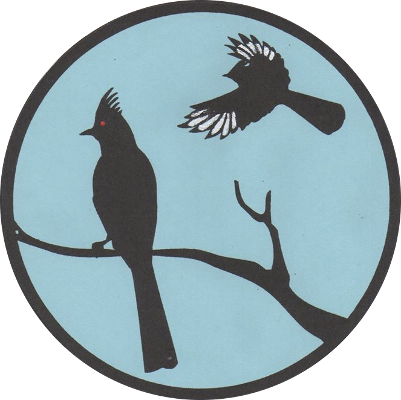Identifying hawks can be a challenge, especially without binoculars. The Cooper’s Hawk (COHA) is our most common backyard hawk, seen most frequently where there are bird feeders. Yes, Nature can be cruel and feeders are sometimes called “Cooper’s Hawks’ Lunch Counters.” Everyone has to eat. The COHA doesn’t soar very often, and will dart among threes and coast low to the ground. The COHA is a small hawk — this is most evident when they’re perched. COHA wings are so large, when they’re flying they don’t look small at all. COHAs prey mostly on small birds, but they love lizards, rats and mice. They will hunt on the ground when that’s the only option, busting into shrubbery in pursuit of something to eat. Young COHAs have yellow eyes and a white-striped chest. Adults have bright red eyes and a reddish-striped chest.
The Red-Tailed Hawk (RTHA) is very common in SoCal, but most commonly seen soaring overhead. Not a likely visitor to most backyards, unless you have a particularly tall tree for the RTHA to perch in as he/she scopes for squirrels and other tasty things. The Red-Tail really does have a red tail, which is easily seen from behind or when soaring and the sun shines through the feathers (pictured). The much-larger RTHA doesn’t fly through obstacles the way a COHA will. The call of the Red Tail is a longish, solitary note, often used in Western-movie sound-tracks to connote, “We’re in the desert, vast and lonely.”
The Red-Shouldered Hawk (RSHA) is slightly more likely to alight in a backyard than the Red-Tail. They really like squirrels and rats. Slightly smaller than the Red-tail, and very clearly identified by its eponymous shoulders and chest. The RSHA’s cry is piercing and repeated.
